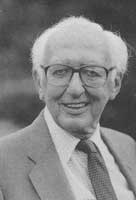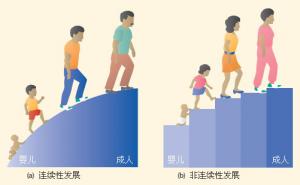www.nmgpsy.com内蒙古心理网New York Longitudinal Study
The New York Longitudinal Study, started in 1956 and continued over several decades thereafter, is regarded as a classic study into personality types and temperament traits.

 The study, conducted amongst young children, in its early days had such persons as Alexander Thomas, Stella Chess, Herbert G. Birch and Margaret Hertzig as principal contributors.
The study, conducted amongst young children, in its early days had such persons as Alexander Thomas, Stella Chess, Herbert G. Birch and Margaret Hertzig as principal contributors.
The New York Longitudinal Study investigations included direct observation and also interviews with parents about their children.
The team came up with ways of investigating individual styles of personality and temperament amongst children and discovered ways of identifying and giving a relevant rating to nine separate "qualities" associated with personality and temperament.
In analysing their data, the nine characteristics that were identified by the team as being reliably scorable on a three-point scale (medium, high and low) were:-
When the researchers analysed the behavioural profiles of the children in an endeavour to find correlations among the nine individual characteristics, they found that certain attributes did seem to cluster together. This clustering seemed to point toward the definition of three general types of temperament (although quite a few of the children did not easily fit into any of these three "types").
The remaining thirty-five per cent had such mixtures of the nine temperament traits as did not seem to allow classification into one of the three groups.
Earlier publications of the findings of the New York Longitudinal Study include:-
Thomas A, Chess S: An approach to the study of sources of individual difference in child behavior. J Clin Exp Psychopathol 1957; 18:347–357
Chess S, Thomas A, Birch HG, Hertzig M: Implications of a longitudinal study of child development for child psychiatry. Am J Psychiatry 1960; 117:434–441
see also:-
CHESS, STELLA, M.D., ALEXANDER THOMAS, M.D., AND HERBERT G. BIRCH, M.D., PH.D.
Your Child Is A Person: A Psychological Approach To Childhood Without Guilt. The Viking Press, New York: 1965. 213 pages
and
CHESS, STELLA, M.D., ALEXANDER THOMAS, M.D., AND HERBERT G. BIRCH, M.D., PH.D.
The Origin of Personality. Scientific American, pp 102-109. 1970
and
Temperament: Theory and Practice by S. Chess and A. Thomas
There may well be an association to be made between the New York Longitudinal Study and Dr.William Sheldon who also researched into Human personality traits / temperament types.
N.B. Please be advised that we consider the full implicationsof this theorising concerning human personality traits and humantemperament types to have some potentially most perplexingaspects. You have been warned!!!
Some inkling of the potential far-reaching implications of the research by the New York Longitudinal Study and by Dr. Sheldon into human personality and temperament traits can be gained through reading our page about the " Tripartite Soul " of Humanity as identified by Plato and Socrates, by Pythagoras, by Shakespeare and by several Major World Religions:-
www.nmgpsy.com内蒙古心理网
New York Longitudinal Study
Alexander Thomas, Stella Chess, Herbert G. Birch
personality types - temperament traits
The New York Longitudinal Study, started in 1956 and continued over several decades thereafter, is regarded as a classic study into personality types and temperament traits.
 The study, conducted amongst young children, in its early days had such persons as Alexander Thomas, Stella Chess, Herbert G. Birch and Margaret Hertzig as principal contributors.
The study, conducted amongst young children, in its early days had such persons as Alexander Thomas, Stella Chess, Herbert G. Birch and Margaret Hertzig as principal contributors.The New York Longitudinal Study investigations included direct observation and also interviews with parents about their children.
The team came up with ways of investigating individual styles of personality and temperament amongst children and discovered ways of identifying and giving a relevant rating to nine separate "qualities" associated with personality and temperament.
In analysing their data, the nine characteristics that were identified by the team as being reliably scorable on a three-point scale (medium, high and low) were:-
- the level and extent of motor activity;
- the rhythmicity, or degree of regularity, of functions such as eating, elimination and the cycle of sleeping and wakefulness;
- the response to a new object or person, in terms of whether the child accepts the new experience or withdraws from it;
- the adaptability of behavior to changes in the environment;
- the threshold, or sensitivity, to stimuli;
- the intensity, or energy level, of responses;
- the child's general mood or "disposition", whether cheerful or given to crying, pleasant or cranky, friendly or unfriendly;
- the degree of the child's distractibility from what he is doing;
- the span of the child's attention and his persistence in an activity.
When the researchers analysed the behavioural profiles of the children in an endeavour to find correlations among the nine individual characteristics, they found that certain attributes did seem to cluster together. This clustering seemed to point toward the definition of three general types of temperament (although quite a few of the children did not easily fit into any of these three "types").
- The "easy children"
- This type - approximately forty per cent of the 141 children in the total sample were placed in this category - was held to be characterised by positiveness in mood, regularity in bodily functions, a low or moderated intensity of reaction, adaptability and positive approach to, rather than withdrawal from, new situations.
In infancy these children seemed to quickly establish regular sleeping and feeding schedules, were generally cheerful and adapted quickly to new routines, new food and new people. As they grew older they learned the rules of new games quickly, participated readily in new activities and adapted easily to school. This group was called the "easy children", because they presented so few problems in care and training.
- The "difficult children"
- Another set of characteristics such as irregular in bodily functions, usual intensity in reactions, tendency to withdraw in the face of new stimuli, relative slowness to adapt to changes in the environment and general negativity in mood was deemed by the reseachers to be associable with another group that they labelled "difficult children".
As infants such children - comprising about ten per cent of the children sampled - were often irregular in feeding and sleeping, were slower to accept new foods, took a longer time to adjust to new routines or activities and tended to cry a great deal. Their crying and their laughter were rated as being characteristically loud. Frustrations usually seemed to send them into violent tantrums. These children were, of course, something of a trial to their parents and required a high degree of consistency and tolerance in their upbringing. - The "slow to warm up"
- The children classified by the team as "slow to warm up" - fifteen per cent of the population sample studied - typically had relatively low activity levels, tended to withdraw on their first exposure to new stimuli, were slower to adapt, were somewhat negative in mood and responded to situations with a low intensity of reaction.
The remaining thirty-five per cent had such mixtures of the nine temperament traits as did not seem to allow classification into one of the three groups.
Earlier publications of the findings of the New York Longitudinal Study include:-
Thomas A, Chess S: An approach to the study of sources of individual difference in child behavior. J Clin Exp Psychopathol 1957; 18:347–357
Chess S, Thomas A, Birch HG, Hertzig M: Implications of a longitudinal study of child development for child psychiatry. Am J Psychiatry 1960; 117:434–441
see also:-
CHESS, STELLA, M.D., ALEXANDER THOMAS, M.D., AND HERBERT G. BIRCH, M.D., PH.D.
Your Child Is A Person: A Psychological Approach To Childhood Without Guilt. The Viking Press, New York: 1965. 213 pages
and
CHESS, STELLA, M.D., ALEXANDER THOMAS, M.D., AND HERBERT G. BIRCH, M.D., PH.D.
The Origin of Personality. Scientific American, pp 102-109. 1970
and
Temperament: Theory and Practice by S. Chess and A. Thomas
There may well be an association to be made between the New York Longitudinal Study and Dr.William Sheldon who also researched into Human personality traits / temperament types.
N.B. Please be advised that we consider the full implicationsof this theorising concerning human personality traits and humantemperament types to have some potentially most perplexingaspects. You have been warned!!!
Some inkling of the potential far-reaching implications of the research by the New York Longitudinal Study and by Dr. Sheldon into human personality and temperament traits can be gained through reading our page about the " Tripartite Soul " of Humanity as identified by Plato and Socrates, by Pythagoras, by Shakespeare and by several Major World Religions:-
www.nmgpsy.com内蒙古心理网






